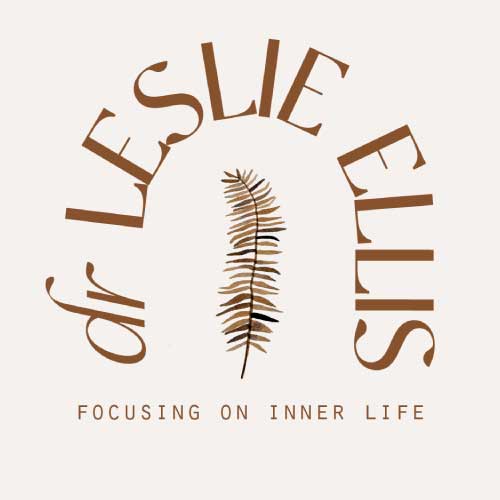Tackle the most intense, vivid and distressing nightmare first. Pick up helpful themes in the dreams. Pay attention to sleep hygiene and learn to relax before falling asleep. Consider cultural beliefs. And treat both trauma-related nightmares and those with no known origin the same way. These are a few of the main recommendations from an expert panel on cognitive behavioral nightmare treatment, paving the way for clarity in a field historically mired by complexity and confusion.
We know that nightmare treatment works well in most cases, and that cognitive-behavioral therapy (CBT) approaches have been well supported by empirical research. Despite this, there have been many sources of confusion about how to apply these treatments. To name two: clinical trials have yielded mixed results, and treatment components used in these studies were not consistent, but rather varied and nuanced.
To help resolve the confusion, a group of nightmare treatment experts met three times in 2021 and 2022 with the goal of reaching a consensus on protocols for CBT applied to nightmares (CBT-N) for adults. The project was funded by the US Department of Defense, and the result is a paper (Pruiksma et al. 2025) and a free online training for mental health professionals: CBTNightmares.org
The panel included experts in sleep medicine, nightmare treatment and nightmare research. The group reviewed existing literature and also drew on their collective expertise to create a standardized CBT-based treatment protocol and training. Although there are limitations to this new version of CBT-N, it is a starting place with clearly-defined terms and common ground upon which to stand going forward.
CBT-N includes many elements of the mostly deeply-researched protocol for nightmare treatment, Imagery Rehearsal Therapy (IRT). Exposure, Relaxation, and Rescription Therapy (ERRT) also features prominently, in particular with respect to exposure to the nightmare material and relaxation training. Because nightmare disorder is also implicated in sleep disturbances, sleep hygiene (CBT for insomnia or CBT-I) also forms part of the treatment.
Highlights of the New CBT-N Protocol
Trauma vs idiopathic nightmares.
Nightmares are defined as distressing, well-remembered dreams that cause awakening and clinically significant impairment. Research has clearly delineated a difference between nightmares related to trauma, and idiopathic nightmares with no clear origin. However, clinicians can treat both of these types of nightmares with the same techniques. One caveat: with trauma-related nightmares that closely replicate the trauma to which they refer, it is important to clarify that you are treating the nightmare and not the trauma itself – and to highlight any differences, however small, between the dream and the actual event.
Consider cultural beliefs
Not everyone who suffers from nightmares will be an appropriate candidate for CBT-N. There are many and diverse beliefs and practices around dreams that must be considered. When in doubt, therapists might want to consult with spiritual or community leaders to ensure they are offering treatment consistent with the patient’s beliefs and values.
Relaxation training and sleep efficiency
Relaxation training is now considered an essential component of both insomnia and nightmare treatment because of the link established between parasympathetic activity and disturbed dreaming. The panel recommends relaxation training early in the treatment process, and daily practice for patients. Sleep hygiene is also considered an important aspect of treatment because insomnia and nightmares are inherently linked. Helpful sleep habits include consistent bedtime, a wind-down period before bed, and no screen time or stimulating substances before turning in for the night.
Exposure to the nightmare: “Leverage the strongest approach”
One clear and potentially controversial recommendation from the panel is that the target nightmare to work with first should be the most frequent, vivid and distressing one. In CBT-N, exposure takes the form of writing the nightmare down in first-person, present-tense and to include as much detail and sensory information as possible, including thoughts and feelings that arise. Grammar, wording and legibility are not important, but maximum exposure to the nightmare content is encouraged – unless the patient declines or has limited time for treatment.
One of the reasons for choosing the most intense nightmares is that helpful treatment effects appear to generalize from these powerful dreams to less intense ones – but not the other way around. In addition, nightmare treatment is typically short-term (6 one-hour sessions are recommended), and then patients are able to complete the steps on their own. Therefore, the experts reasoned, it’s best to work with the worst dreams while there is in-person support. In addition, the practice helps patients build tolerance for difficult emotion, giving the dreamer a greater sense of mastery over their nightmare material. If patients are unclear about which dream to choose, the more recent and clearly-recalled is suggested.
The rescripting process: Pick up helpful themes
It has been established that a sense of mastery and control over nightmares helps reduce the distress they cause. Therapists are encouraged to help the dreamer identify supportive themes in their dreams, such as trust, safety, power and control, self esteem and connection and use these themes in their new version of the nightmare. They are asked to write the rescripted version in first person, present tense, and include detail, emotion and thoughts that arise. They are specifically asked to provide a link between the new version and the nightmare. Before going to sleep, and after relaxation practice, they are asked to review the rescription for ten minutes each night (and also during the day if they wish).
Future directions and some caveats
With a clear protocol and defined steps and terms, there can now be more standardization in nightmare treatment and research. One area that was flagged for further clarification is how best to approach the treatment of comorbid nightmares and PTSD. There are arguments for treating the nightmares first and vice versa, and for now, cases should be considered on an individualized basis. More research is also needed into nuances of treatment, such as dosage, and how to combine treatment elements with medication and with other helpful approaches (such as lucid dreaming and other methods not based on CBT). There is also the question of how to treat those with cultural beliefs that clash with CBT-N, as well as those with the inability to visualize (aphantasia).
Although a consensus has been reached among CBT experts about how best to treat nightmares given what we now know, there is still a lack of clarity about which specific elements of the treatment are essential; more dismantling studies that test discrete elements could help. CBT-N begins with education about sleep hygiene and, if applicable, psychoeducation about trauma, followed the core elements of exposure and rescripting – both done by writing the dream or new dream ending in as much detail as possible.
Authors of CBT-N suggest that users of this protocol to be experienced in delivering CBT, and not all therapists follow this orientation, nor do all patients respond well to it. About one-third of patients are not helped by CBT-N, so there is a need for other approaches. Therapists can adapt key treatment elements to other methods (as I have done with embodied experiential dreamwork practices for treating nightmares). The authors note that the recommendations “are not intended to signal that other treatment approaches are not useful or viable” but rather, are offering clarity and consistency by combining the most effective CBT-based methods into one standard protocol.
Clearly, there are many outstanding questions in the complex field of nightmare treatment. However, this consensus statement and free training are huge steps forward, addressing two of the main issues: confusion and compexity around treatment protocols, and lack of available training.
Pruiksma, K. E., Miller, K. E., Davis, J. L., Gehrman, P., Harb, G., Ross, R. J., … & Peterson, A. L. (2025). An Expert Consensus Statement for Implementing Cognitive Behavioral Therapy for Nightmares in Adults. Behavioral Sleep Medicine, 1-19. https://doi.org/10.1080/15402002.2024.2437634
Join me on substack for an ongoing journey into the world of dreaming!
www.https://dreamsdemystified.substack.com/
Subscribe to get full access to my complete book chapters, publication archives, and to come: recordings, lectures, papers and more.

